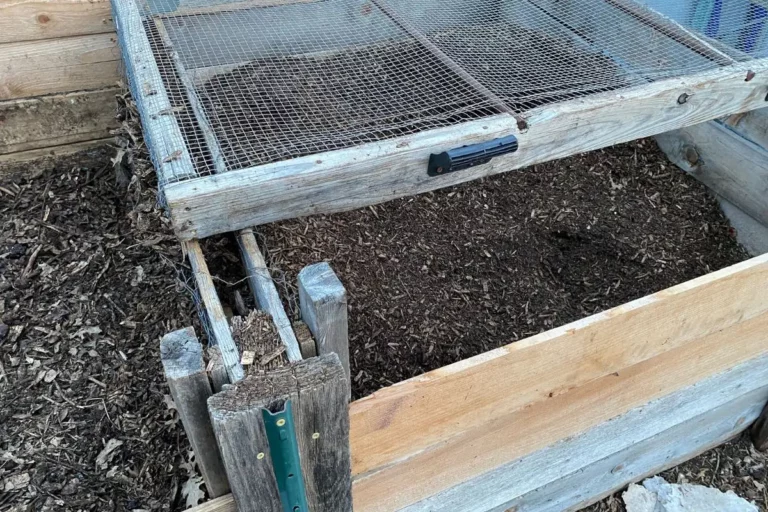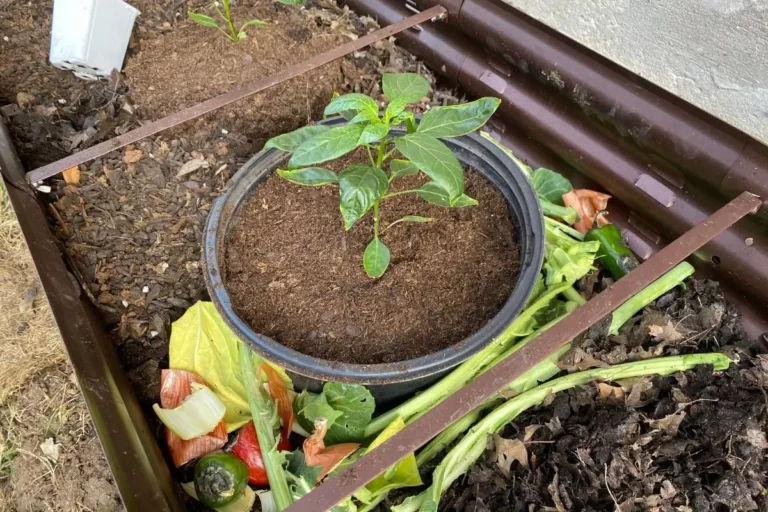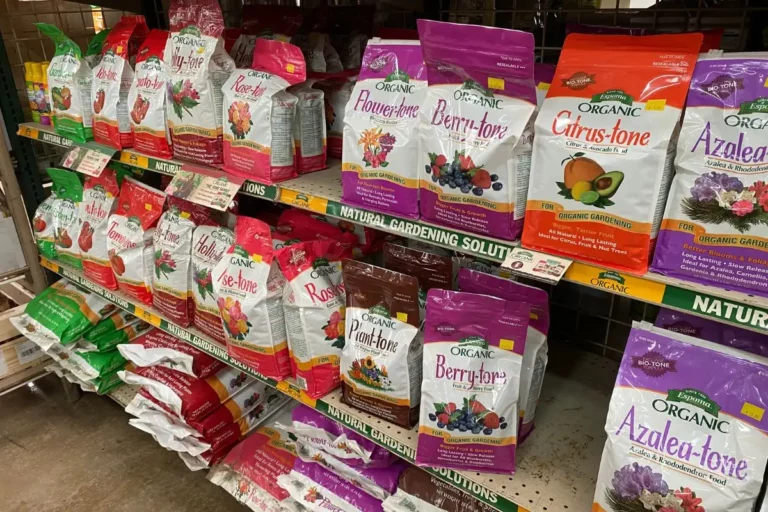Don’t Compost These Weeds (30+ Plants to Avoid)
I love composting since I can reuse my kitchen scraps and yard waste by transforming them into a nutrient-rich soil amendment (instead of just sending them off to the landfill).
However, things get a bit more complicated when we’re talking about pesky weeds or unwanted grasses that pop up around my property.
Should they make their way into my compost pile? What ones shouldn’t be composted?
Avoid composting perennial weeds that have extensive root systems, invasive plants that can spread easily, harmful or toxic plant species, weeds with seed heads, or plants that look diseased. Never compost plants that have been treated at any point with chemical pesticides or herbicides.
In this article, I’ll give you a helpful overview of the ins and outs of composting weeds and grass plus things you should consider and mistake you’ll want to avoid when doing so.
Because here’s the thing: If you’re not careful, you might unwittingly give weed and grass seeds a perfect growing environment, contributing to their spread around your garden.
This article will cover 4 important topics:
- types of weeds and grasses you shouldn’t compost (and why).
- a list of 30+ weed species to avoid putting in the compost.
- what to do with grass clippings and how to solarize them for safe composting.
- Information about how grass impats nitrogen levels in your compost.
Just so you know, I use the term “weed” rather loosely in this article. Some plants thought of as weeds produce beautiful flowers or foliage but they’re incredibly invasive. Certain grasses, and even a tree species or two, act weed-like in that they hurt native species and it’s hard to get rid of them once they’re established.
In other words, when I use “weed” in this article, I’m referring to plants that grow aggressively and often do so in destructive, unwanted ways.
Now that I’ve covered a few basics, let’s get into the details and look at why exactly you need to be careful when composting weeds and grasses.
What Weeds Shouldn’t Be Composted (and Why)?
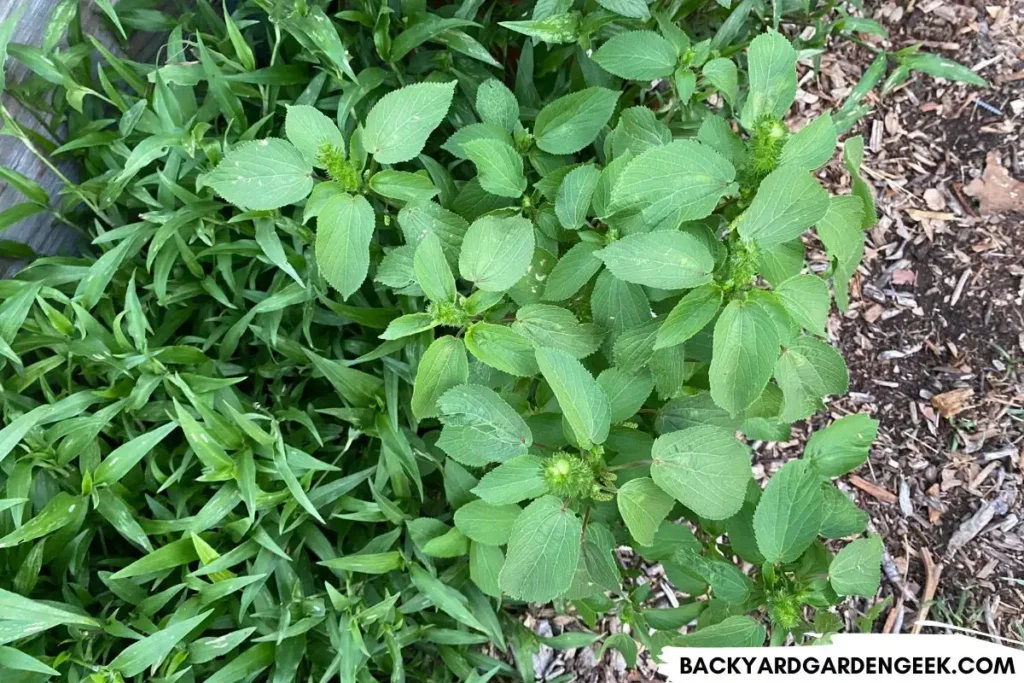
Most garden plants provide excellent for your compost bin (assuming they’re not diseases), but certain types of weeds and grasses should be avoided to prevent problems down the line.
Here are the plants you’ll always want to avoid composting:
- Perennial Weeds: These weeds are persistent and can survive composting, especially if your compost pile doesn’t reach high enough temperatures to kill their roots, seeds, or rhizomes. Examples include dandelions, bindweed, horsetail, quackgrass, and Canada thistle.
- Invasive Plants: Invasive plant species can be very hardy and survive composting. They can then spread and take over your. Always check if a plant is invasive in your area before composting it. Examples might include English ivy or kudzu, depending on where you live, but even mint plants are hardy and invasive enough to cause problems in your garden.
- Poisonous or Harmful Plants: Avoid composting plants that are poisonous or harmful. For example, poison ivy, poison oak, and poison sumac can cause a rash if you touch them, even after they’ve been composted. Your compost is supposed to help your garden, not hurt you!
- Plants Treated with Pesticides or Herbicides: If you’ve ever used chemical treatments on or around your property, it’s best to avoid composting weeds and grass. There’s just no telling what chemicals might end up in your compost pile and eventually among your garden plants.
- Weeds with Seed Heads: If you’re composting weeds that have gone to seed, you run the risk of those seeds surviving the composting process and being spread throughout your garden when you use the compost. This can lead to an even bigger weed problem. If you see any seeds, toss the plants!
- Diseased Plants: If any plants look diseased—whether they’re weeds grass, or popular garden plants like tomatoes and peppers—don’t put them in your compost pile. The diseases could survive and infect plants wherever you use your compost.
That’s the general overview, but here’s a more detailed, nuanced explanation for each of these overarching categories.
1. Perennial Weeds and Grasses
Perennial weeds are the ones that keep coming back year after year. They’ve got extensive root systems or produce tons of seeds that can survive typical composting temperatures.
Here’s why you should be wary of them:
- Persistent Nature: Many perennials, such as Bermuda grass and quackgrass, can regenerate from even tiny pieces of root. If you compost them and your pile doesn’t get hot enough, you might end up spreading these weeds back into your garden when you use the compost.
- Seed Survival: Some perennials, like dandelions and thistles, produce seeds that can remain viable for several years. If your compost doesn’t reach high enough temperatures to kill these seeds, they can sprout in your garden later.
2. Invasive Weeds and Grasses
Invasive weeds are non-native species that can quickly take over a new environment, crowding out native plants and disrupting local ecosystems.
Here’s what makes them a problem for composting:
- Quick Spread: Invasive weeds, such as Japanese knotweed and kudzu, reproduce and spread rapidly. Composting them can lead to the spread of these aggressive invaders.
- Resistance: Many invasive weeds are remarkably tough and can survive even in harsh conditions. Some can regrow from small pieces of plant or root left in the compost.
I’ve got friends and family in Alabama, Georgia, and Florida, and if you drive around certain areas of those states, you’ll see kudzu taking over whole swaths of land and covering entire trees.
You’d never want that stuff anywhere near your property, much less your garden or compost bin!
3. Harmful or Toxic Plants
This category includes plants that can harm you, your pets, or your garden.
Here’s why composting them can be risky:
- Toxicity: Some plants—like poison ivy, poison oak, and poison sumac—contain toxic compounds that can cause skin irritation or allergic reactions. Others, like foxglove and oleander, are poisonous if ingested and can pose a threat to pets and wildlife.
- Harmful Effects: Certain weeds can harm other plants. For example, the black walnut tree produces juglone, a substance that inhibits the growth of many other plants. If you compost black walnut leaves or nuts, the juglone can leach out into the compost and harm plants later on.
4. Plants Treated with Pesticides or Herbicides
Sometimes it’s not the plant itself but what’s on it that can cause problems.
If you’ve sprayed your property with a persistent pesticide or herbicide at any point in the recent past, composting lawn weeds and grasses can introduce these chemicals into your compost.
Here’s why that’s a concern:
- Persistence: Some pesticides and herbicides, like glyphosate, atrazine, and clopyralid, can persist in compost. These chemicals may harm beneficial composting organisms or affect the plants you later apply the compost to.
- Toxicity: Pesticides are, by definition, toxic to some organisms. If these chemicals end up in your compost, they can harm the beneficial insects, earthworms, and microbes that help turn your waste into rich, fertile compost.
5. Weeds or Grasses with Seed Heads
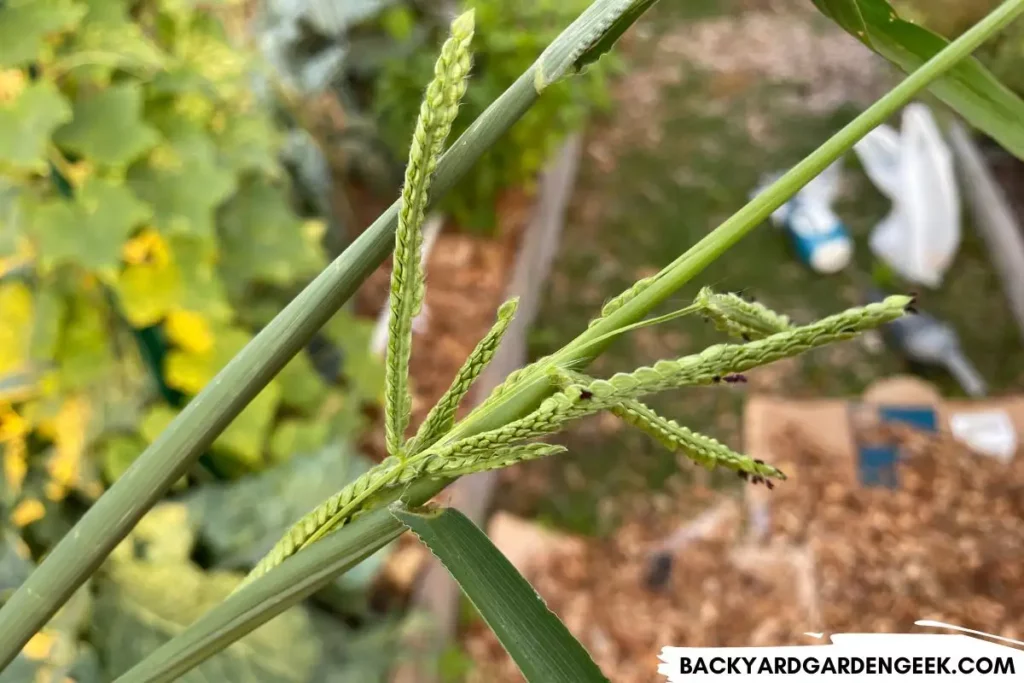
Weeds with mature seed heads pose a unique challenge to the composting process.
They carry the potential to introduce a new generation of weeds into your garden, so here’s why you should be careful:
- Survival Skills: Weed seeds, particularly those of annual and biennial weeds like common chickweed and shepherd’s purse, are built for survival. They can withstand diverse conditions and remain viable for years. If your compost pile doesn’t reach high enough temperatures to kill these seeds, they’ll likely germinate once you spread the compost in your garden.
- Seed Abundance: Weeds are prolific seed producers. For example, a single plant of purslane, a common garden weed, can produce up to 50,000 seeds. But a single Palmer amaranth plant can produce up to one million seeds! Including these in your compost can result in an unintended weed invasion in your garden.
6. Diseased Plants
Diseased plants or those infected by fungal or bacterial pathogens can potentially infect your compost pile.
Here’s what makes them problematic:
- Pathogen Spread: If your compost pile doesn’t reach a sufficiently high temperature or if the composting process is not thorough, some plant diseases like blight or clubroot can survive in the compost. These can later infect healthy plants when you apply the compost.
- Persistent Spores: Fungal diseases, like powdery mildew and rust, produce spores that can survive composting. If these diseases infected your plants, composting them could spread the disease to other plants.
- Virus Survival: Some viruses can also survive in plant debris and can infect new plants. For example, composting tomato plants with tomato mosaic virus can lead to a new outbreak next year.
Please remember that not all plant material is created equal, and some can potentially do more harm than good when composted.
I recommend using a plant app or the Google app to try and identify the weeds or grasses you’ve got on your property before composting them.
30+ Weeds You Should Never Compost
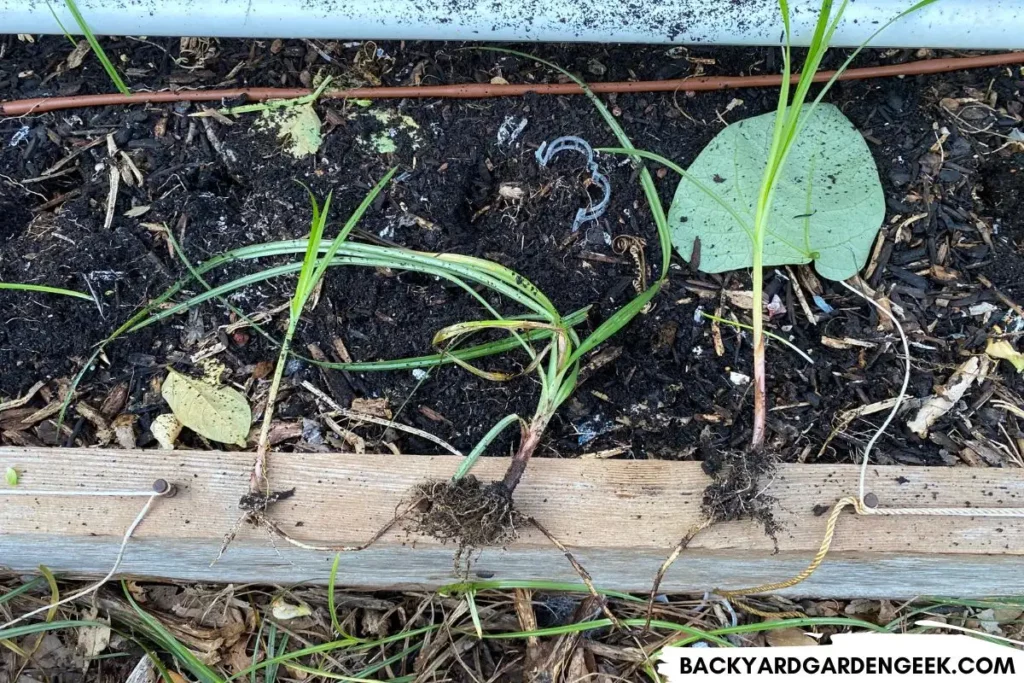
Here’s a quick list of weeds that you shouldn’t put in the compost pile or bin.
- Bindweed
- Bittersweet Nightshade
- Black Walnut
- Broadleaf Plantain
- Buckthorn
- Canada Thistle
- Crabgrass
- Creeping Buttercup
- Creeping Charlie / Ground Ivy
- Dandelion
- Dock
- English Ivy
- Field Bindweed / Morning Glory
- Garlic Mustard
- Goutweed
- Horse Nettle
- Japanese Knotweed
- Kudzu
- Lesser Celandine
- Milk Thistle
- Mugwort
- Nutsedge
- Oleander
- Poison Ivy
- Poison Oak
- Poison Sumac
- Purslane
- Purple Loosestrife
- Quackgrass / Couch Grass
- Sorrel (Red & Yellow Varieties)
- Stinging Nettle
- Russian Thistle / Tumbleweed
- Velvetleaf
- Wild Violet
If you’re not sure what weed you’ve got on your property, use a plant-identifying app, share a photo with a Facebook gardening group, or contact your local university extension office.
Please don’t compost something if you don’t know what it is (unless you’ve got a “hot” compost pile on your property).
When it comes to composting, it’s always better to be safe than sorry. If you’re unsure whether a particular weed or grass is safe to compost, just trash it!
Can I Put Grass Clippings in the Compost?
Grass clippings can be a great addition to compost piles, rich in nitrogen and quick to break down.
However, some grasses, especially those with rhizomes—which are stems that produce new plants—can be a huge headache.
They could potentially sprout and take root within your compost pile (or later in your garden beds and containers), filling your garden with unwanted grass rather than nutrient-rich soil amendments.
Grasses You Should Avoid Composting
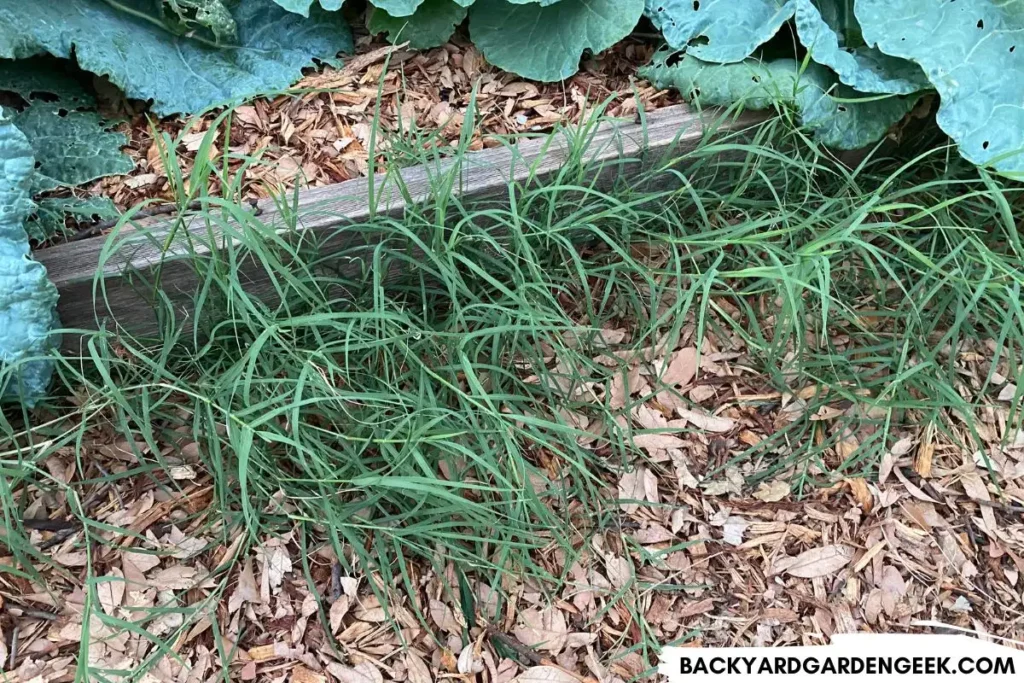
You should be particularly cautious when composting these grasses:
- Bermudagrass
- Johnson Grass
- Kentucky Bluegrass
- Quackgrass
- Tall Fescue
- Zoysia Grass
These grasses have strong rhizomes or stolons (horizontal aboveground stems) that can survive composting unless the pile reaches sufficiently high temperatures. Composting these grasses might lead to an infestation when you later use the compost in your garden.
How to Solarize Your Grass Clippings
If you really want to compost all the grasses on your property, including the rhizomatic ones, you can use solarization to help you safely compost such problematic grass clippings.
Here are simple step-by-step instructions for solarizing your grass clippings (and weeds too):
- Bag the Clippings: Gather your grass clippings and put them in black plastic trash bags. Use the heavy-duty ones since grass can be quite heavy and seal them tightly.
- Place Bags in the Sun: Set the bags of grass clippings out in the sun, preferably atop a concrete or asphalt surface. Choose a location where it will receive direct sunlight for most of the day. The goal is to cook that grass before it goes into the compost bin.
- Wait and Monitor: Leave the bag in the sun for at least 2 weeks. The heat in the bag should effectively “cook” and kill the grass clippings and any stolons or seeds that might be present. You might want to shake the bags a bit now and then to encourage a more even cooking.
- Check Before Composting: After 2 weeks, check the grass clippings. They should be completely brown and look 100% dead. If they’re still green, leave them in the sun longer. Once they’re completely dead, they’re safe to compost.
By solarizing grass clippings, you can ensure that you’re not introducing potentially invasive grasses to your compost and, subsequently, your garden as well.
Let’s finish up this article by taking a quick look at how weeds might impact the nitrogen levels in your compost pile or bin.
Green or Brown: Do Weeds Provide Nitrogen for Compost?
Care must be taken when composting weeds and grasses—especially using solarization methods to kill off 100% of everything—but if you’re confident that you’ve destroyed the plants’ abilities to reproduce themselves in your compost, weeds can be a good addition.
Weeds provide a valuable source of nitrogen for your compost pile since they’ll eventually break down into nutrient-rich material.
Those who compost often talk about the importance of adding both “green” and “brown” materials to your compost.
“Green” materials are high in nitrogen and include things like fruit and vegetable scraps, coffee grounds, weeds, and grasses. “Brown” materials, on the other hand, are high in carbon and include items like dried leaves, straw, and cardboard.
Nitrogen is a crucial element in composting as it’s a primary food source for the beneficial bacteria that break down the compost pile. This means that weeds, as they compost down, will fuel the decomposition process.
However, as I noted earlier, you need to be very cautious when composting weeds since they have hardy root systems and seeds that can survive the composting process.

When you do add weeds to your compost pile, you should either solarize them in advance or ensure that your compost pile gets hot enough, usually between 130-160°F (54.4-71.1°C), to kill off any potential seeds or roots.
As always, if you’re ever unable to identify the weeds or unsure whether it’s safe to compost it or not, don’t take the risk. Just toss it in the trash bin. Happy composting!
More Information
Interested in learning more about composting or creating healthy soil in your garden beds? Take a look at these related articles:
- 18 Best Materials to Put in the Bottom of Your Raised Beds
- 23 Plants You Shouldn’t Grow in Raised Beds
- 40 Cheap and Easy Ways to Fill Your Raised Garden Beds
- 50 Plants You Should Never Compost (and Those You Should)
- Composting Pizza Boxes: A Simple, Step-by-Step Guide
- Filling Raised Beds with Just Compost: Should You Do It?
- Is Your Leftover Pizza Compost-Friendly?

